Beth’s feijoada
A friend of mine who visited Brazil many years ago and tasted my wife’s feijoada recently asked me about its recipe. A few days ago, Beth (my wife) was about to make a feijoada and I took some pictures and collected the necessary information to teach my friend how to prepare it. I’m publishing the instructions here, in English, so other foreigners can try this really tasty Brazilian typical food.
By the way, there is a legend in Brazil that feijoada was a food made by/for the slaves using the remaining meat from the “big house”, but that’s not true. Feijoada is an adaption of cassoulet and, imho, a much better and enhanced version.
Feijoada is mostly black beans mixed with different cuts of pork meat and sausages, and should be eaten preferably in the winter. If you wanna give it a special touch, you can prepare it in the wood stove 😉
So, let’s go… I’ll do my best to translate the ingredients names correctly. Probably some of the sausages can be hard to find outside Brazil, but with the currently globalization, I believe it is possible to find anything anywhere:
- Black beans
- Calabresa sausage (google translated as Pepperoni Sausage, but I don’t think it is really the same thing)
- Paio sausage (Google doesn’t know how to translate this)
- Pork loin
- Smoked pork ribs
- Jerked beef
- Smoked bacon (or maybe, as my friend said after looking at the photo: fat salt pork)
For the ingredient amounts, well… for this recipe, we used 1kg of black beans, 250g of calabresa, 170g of Paio, 350g of ribs and 150g of bacon. You may play around with the quantities as you wish, but this amounts already gave us a great feijoada!
PS: Some people like also to add pork foot, ear, etc. We don’t, but this is a personal taste.
Preparing the feijoada
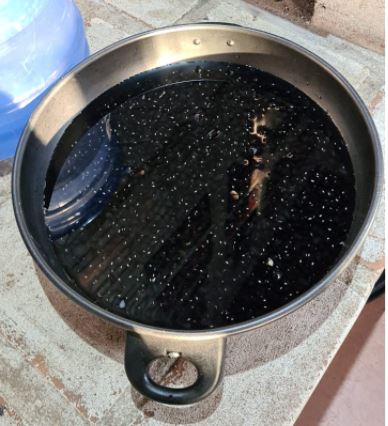
You must start preparing it one day before eating.
At night, put the black beans into water and let it sleep overnight (if necessary, you can complete with more water from time to time, since the beans will probably absorb the water).
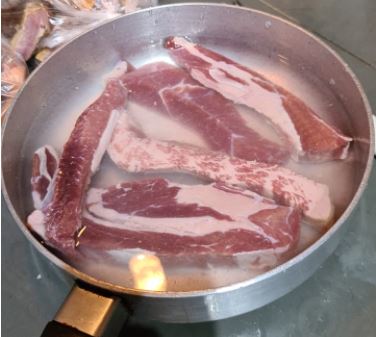
Get a pan and put the jerked beef covered with water. Leave it there for 30 minutes. You can do the same with other salted meats that you may have. This is to remove the salt from the meat, as you probably guessed.
Throw out the water, and repeat the process two more times, but for the 2nd and 3rd times, you will boil the meat in the water to help with the salt extraction.
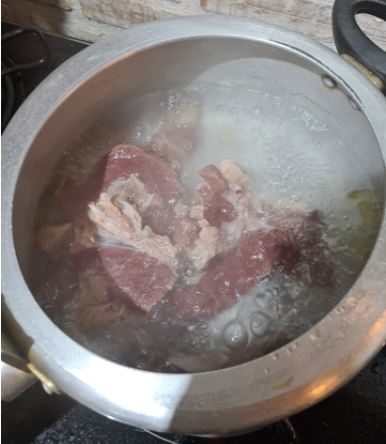
After the 3rd cycle, you put the jerked beef and the ribs with a new water and cook it under pressure for about 20 minutes, but this time don’t throw out the water at the end! You will use it later.
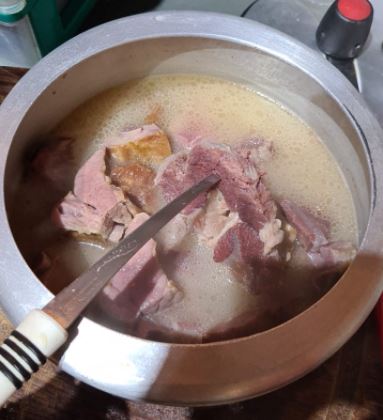
Using a knife or fork, check if the meats are already soft. If so, and if you are like me, you will clean up the meat removing all the white “crap” from it (fat, tendons, etc). This is an optional step and really depends on your own taste. Some people love what I’m calling “crap” here, and probably are cursing me for doing this 🙂
Put the cleaned jerked beef back to the same water that you used to cook it, close the pan and leave it resting overnight. Remember that the beans are still in the water and should be left there for the next day. Go to sleep! You have more work tomorrow!

Good morning! Time to continue the preparation… Skin the sausages and slice the calabresa, paio and half of the bacon. You can do like Beth and slice each one in different shapes 😉
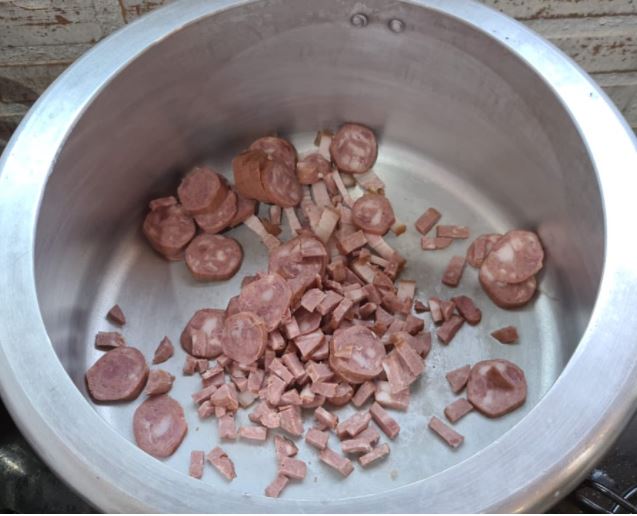
Put them into a big pressure pan (yep, the biggest one you may have).
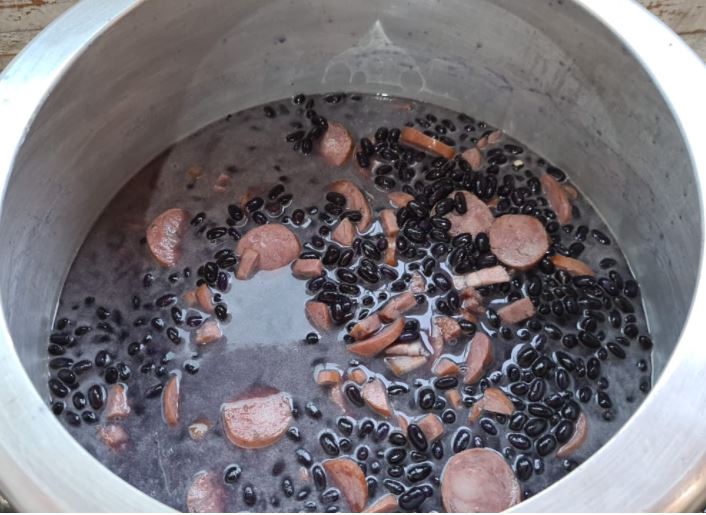
Put the beans into the same pressure pan containing the sliced sausages/bacon and add more water until its level becomes twice the level of the ingredients.
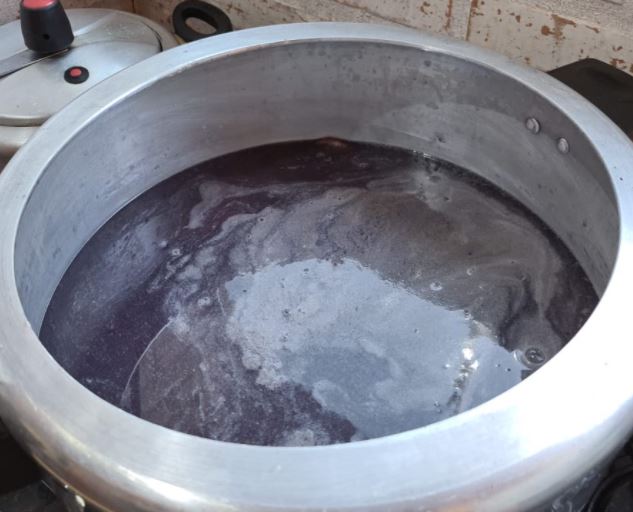
Close the pan and cook it under pressure for 10 minutes (start counting the time after the pan gets full pressured). After that time, depressurize it at once but leave the fire on.
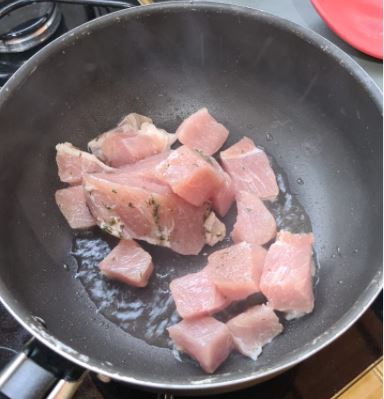
In a skillet, put some oil and add the pork loin (already seasoned to your taste) cut in cubes. When it dries, add some water and keep repeating this until the loin becomes soft (my friend said the name of this technique is brown and braise).
Cut/slice the remaining of the bacon. It will be used later, mixed with other spices to make the seasoning. Take the moment to soak almost a full garlic head in the water. This makes it easier to peel it later.
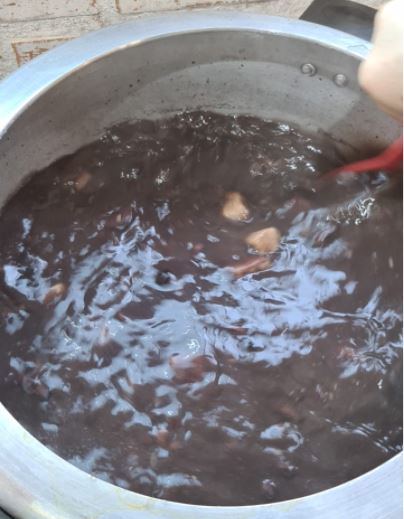
Add the jerked beef (with its water) and the loin into the pressure pan containing the beans, etc and stir. Since the beans are already soft, you don’t need to keep it cooking under pressure. Just leave the pan open and the fire on until the broth gets thicker (look the above picture).
The seasoning

Smash the peeled garlic with salt. Put the remaining sliced bacon into the same pan that was the loin and let it toast. Add onion and the smashed garlic, and pepper if you may (I don’t).
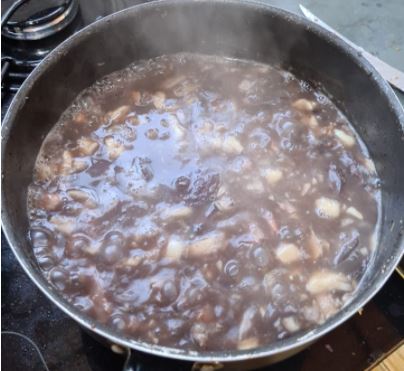
When it looks ready, add a bit of the feijoada to the seasoning’s pan and boil altogether for a few minutes. Now you should have two pans, one still cooking the feijoada, and the other cooking the seasoning – if you don’t, get to the Delorean and go back in time and repeat the process correctly this time;-)
Add the seasoning to the feijoada, stir and taste it to check if it needs more salt. Leave the fire on until the broth gets thick enough (do not pressurize the pan!).
Bon apetit!
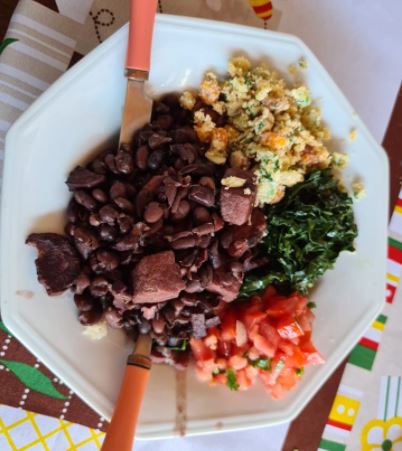
You did! I hope you got a wonderful feijoada!
Usually we eat it with rice, braised cabbage, vinaigrette and farofa! Fried manioc is also good.